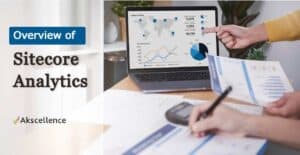EVERY Business might be missing huge potential growth opportunities if its not using the power of Data Analytics, Data Science, AI and Machine Learning. The biggest challenge is that these opportunities aren’t visible through your traditional reporting. One needs to mine into its business data to find the gems of wisdom so far hidden to them.
What are the Challenges?
The challenge isn’t that it’s complex and costly to do; the challenge is the mindset. Companies don’t realize their data’s value and are complacent with traditional mundane reporting done for just generating charts and graphs. Honestly, most people think doing digitization of their Business was enough to reap its benefit to the fullest, failing to realize that digitization only sets the launching pad to start storing and organizing your business data. One needs to go deeper into the data to mine the gold value that it has within it. The good news is that doing this is far easier and much more rewarding than mining gold mines. The need of the hour is to take the first step towards it.
One can ask, where do you start on this. There isn’t any fixed way to do this, but still, there are pretty common ways that could be accomplished quickly.
Best Rewards Generated by Data Analytics
Let’s layout specific steps that one needs to initiate to get the best rewards generated by Data Analytics.
- Data Source: Find and list out the current source(s) of data used by businesses. Data experts should be able to see the data formats and suggest how to converge these multiple sources of data into a single source of truth for the Business. This has been the traditional standard way to store and standardize data, even for traditional reporting purposes. The good news is that the exact needs to be done at this stage to enable Data Analytics reports.
- The way the Data Analytics report consumes data is similar to traditional reporting, but its data is drastically different. If this point is still in doubt, its better to arrange for a working demo with Data Analytics experts/companies to understand and appreciate the difference. They are listing few points to give it a thought on this.
- Reporting is “the process of organizing data into informational summaries to monitor how different areas of a business are performing. “Measuring core metrics and presenting them — whether in an email, a slide deck, or online dashboard — falls under this category.
- Analytics is “the process of exploring data and reports to extract meaningful insights, which can be used to understand better and improve business performance.”
Differences in value
- Reporting provides you with information; the analytics give you insights.
- Reporting raises questions; analytics attempts to answer them.
- Both are valuable but for different purposes.
- What’s so special about analytics?
- Analytics explains the “why?” and the “so what?”
- How? Because it’s dynamic — on more than just a scale of time or interval. You should be able to contort the data to whatever you need. If what you see is a set of standard metrics, it isn’t truly an analytical assessment (or an analytics product).
- From this active investigation into the data, you can derive real-life recommendations about your Business. What should you change about your practices to improve your core metrics?
- In this way, analytics is also notable because it’s highly actionable. It must be acted upon. The value of analytics is only truly delivered upon your follow-up, only if you come up with those recommended next steps and execute them—more on that below.
3. Find KPIs: There are two ways to approach KPIs (Key Performance Indicators) to generate Analytics reports.Some KPIs are pretty standard, and each Business knows some KPIs that they need to track. This list can be checked against the standard KPI list used by similar businesses to know what is missing and add that to the list.
When using advanced analytics using the power of Machine learning/AI, there is a different approach to KPIs. AI digs into business data and finds the pattern for you. It suggests what right KPIs relevant for the Business and shares corresponding business insights that affect Business directly, either positively or adversely are. This is a good approach but is suggested only after Business matures into using business analytics.
4. Dashboard time: Next is the time to showcase all hidden gems in data, visually as dashboards. They do look similar to regular reports till you start using them. User realizes the ease of changing the dimensions in reports very soon, and one report virtually acts as many reports put together with a few clicks to switch from one to the other. This becomes very powerful for a business analyst who uses his/her business knowledge to find a correlation between different reports and find the business insights.
5. Advanced Analytics: Easy to use and easy to switch to different views works well with experienced business analysts; however many times its desirable that Artificial Intelligence itself digs into the data and suggests business insights which can be directly used by Business to know what is working well and what is not and what are the reasons for that. Then action can be taken based on that to push right levers to induce engine of growth and halt source(s) of loss.
May you still have many more questions? No issues. Please do contact us for a quick discussion and demo of the Analytics capabilities.




